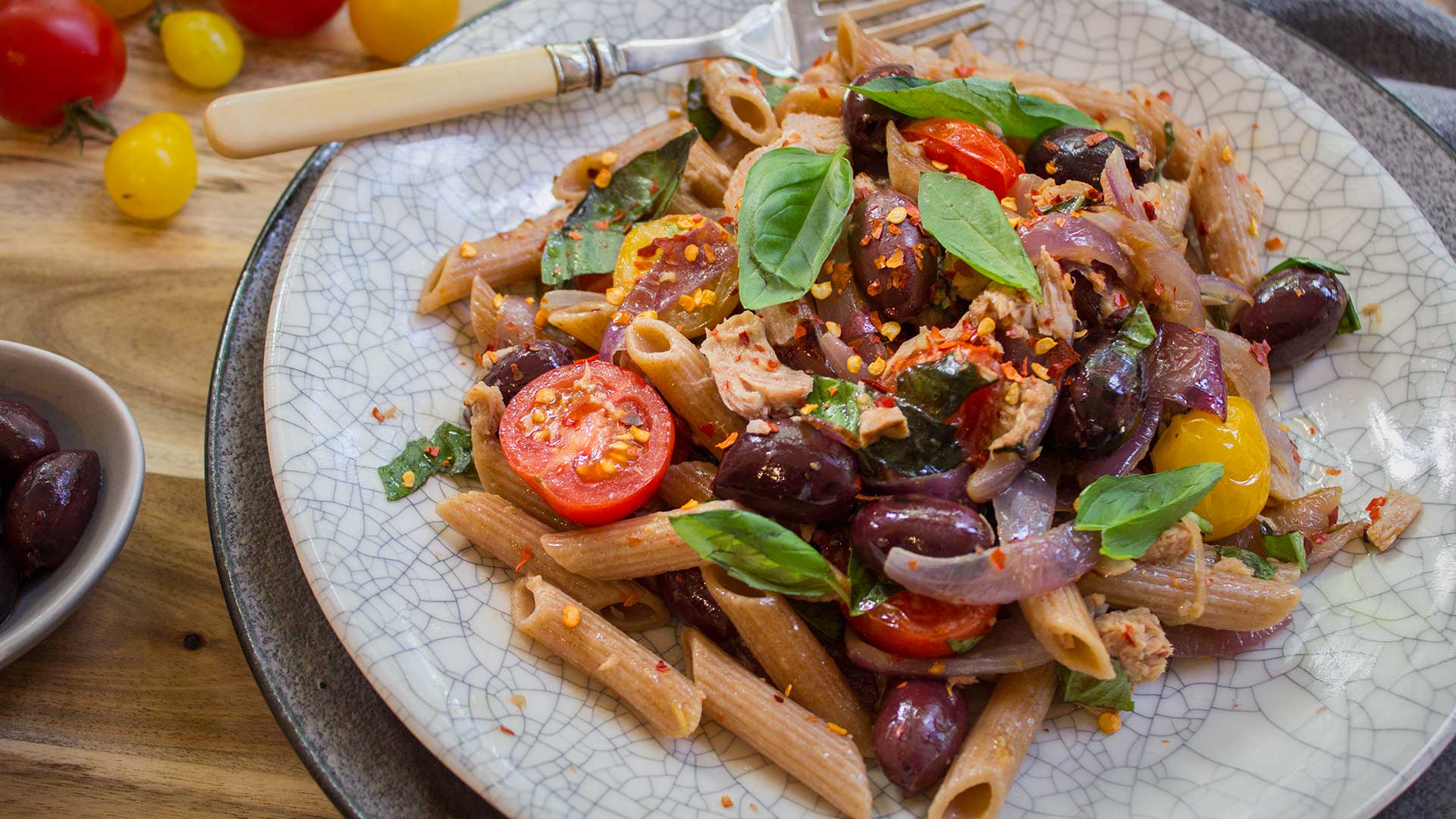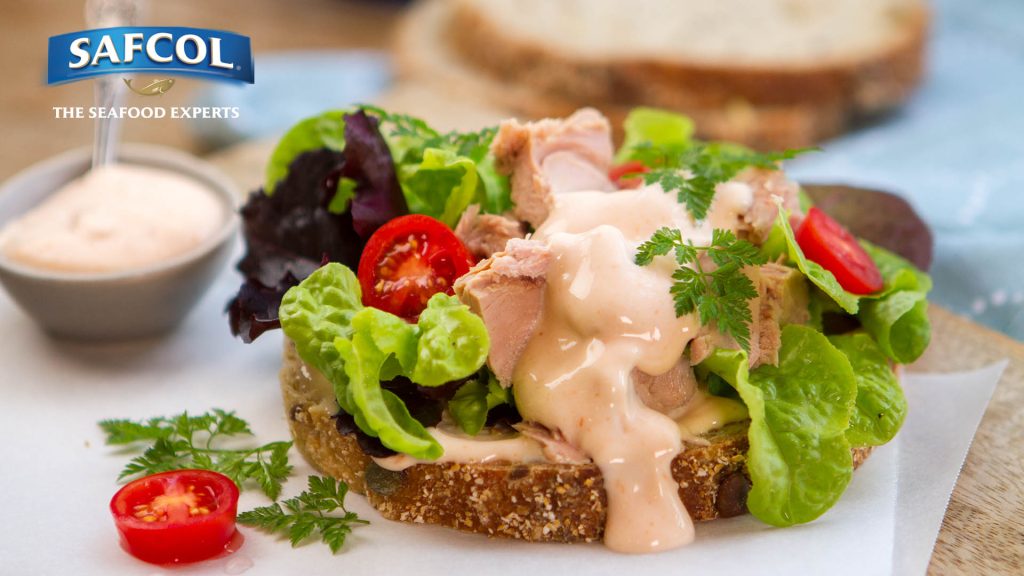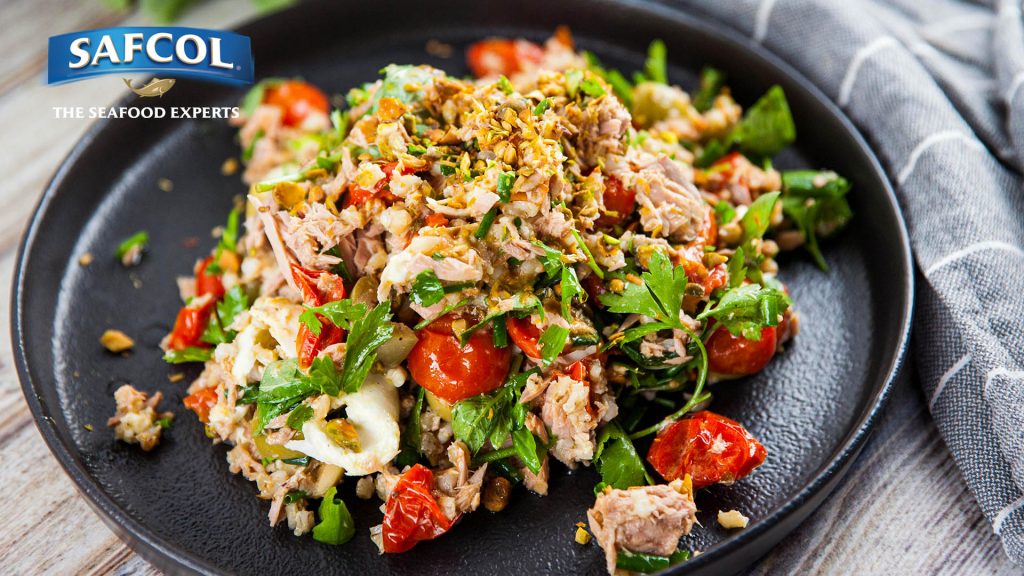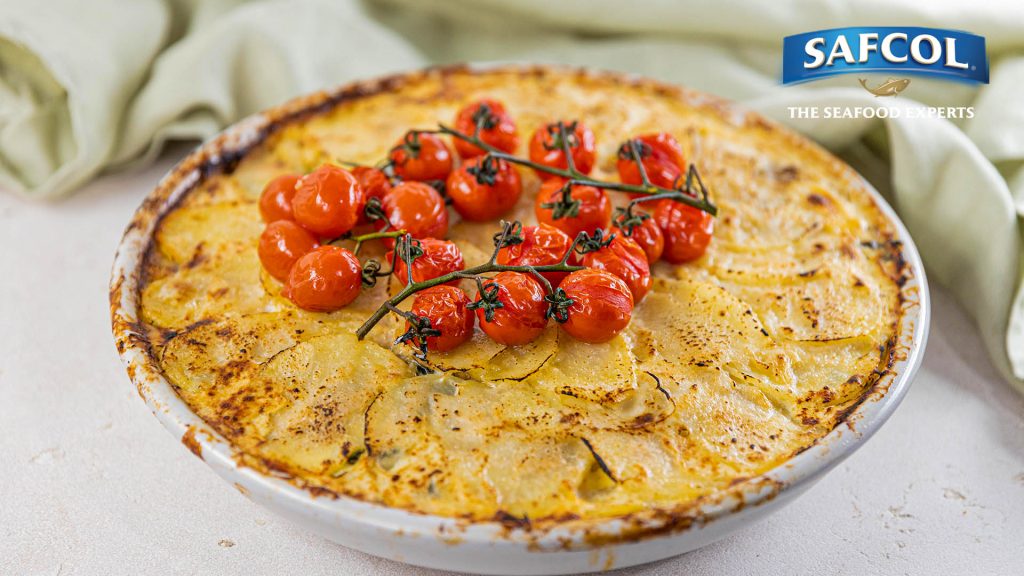
Tuna cherry tomato spelt pasta
)
Prep Time
5 Minutes
)
Cook Time
10 Minutes
Yield
1
Difficulty Level
Quick
Ingredients
- 1 x 185g can Safcol Tuna in oil Italian style, drained
- 1 small red onion, cut in wedges
- 2 medium garlic cloves, crushed
- 3 tablespoons extra virgin olive oil
- 200g whole meal spelt penne
- 10 cherry tomatoes cut in half
- ¼ cup pitted Kalamata olives
- ¼ cup torn basil leaves plus a few small leaves to decorate
- 1 teaspoon dried chili flakes (optional)
- sea salt and freshly ground black pepper
Instructions
- Cook the pasta following the pack instructions for al denté. Drain and reserve.
- In a medium frying pan on a medium heat, add 1 tablespoon of the olive oil and the onion wedges. Sauté until the onion is soft and just starting to change colour. Add the crushed garlic and cherry tomatoes, cook for about 1 minute or until the garlic becomes fragrant and the tomatoes just start to soften.
- Add the tuna with the can liquids, olives, chilli flakes, pasta and remaining olive oil. Stir until heated through; season generously with salt and black pepper and just before serving stir through the torn basil leaves. Transfer to two large serving bowls top with a few extra basil leaves and serve immediately.
| Servings: | 2 |
| Ready in: | 15 Minutes |
| Course: | Dinner |
| Recipe Type: | Pasta |
| Ingredient: | Tuna |

Tuna cherry tomato spelt pasta
The piquant Mediterranean inspired flavours add zing to this nutty tuna cherry tomato spelt pasta dish. Perfect for a fast weeknight dinner. Spelt pasta is made with spelt – an ancient grain which many people find easier to digest than modern wheat pasta. It’s particularly good with tuna and other seafood.
source: wiki
Did you know?
Spelt, also known as dinkel wheat, or hulled wheat, is a species of wheat cultivated since approximately 5000 BC.
Spelt was an important staple in parts of Europe from the Bronze Age to medieval times; it now survives as a relict crop in Central Europe and northern Spain and has found a new market as a health food. Spelt is sometimes considered a subspecies of the closely related species common wheat, in which case its botanical name is considered to be Triticum aestivum subsp. spelta.





